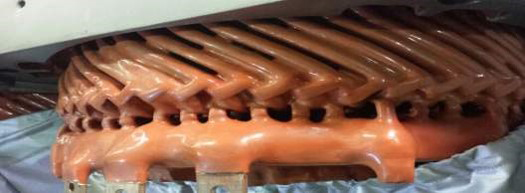In modern industrial facilities, electronics workshops, and power infrastructure, the floor is no longer just for load-bearing or slip-resistance—it has become a key element of electrical safety management. Among various safety measures, electrical insulation floor coating has emerged as a crucial material for reducing the risk of electric shock and ensuring a secure working environment.
This specialized coating system prevents electrical conduction through the floor and is typically composed of synthetic resins—such as epoxy, polyurethane, or acrylic—combined with advanced insulating fillers. When applied to concrete floors, it forms a protective layer with high dielectric strength and low conductivity, effectively blocking electrical current pathways.

Standard construction involves four steps: primer layer, base coat, insulation layer, and topcoat, which together build a dense and seamless protective system.
The main advantage lies in its superior dielectric strength and minimal leakage current. It protects against short circuits, current leakage, and induced electric shocks, especially in high-voltage zones and electrostatic-sensitive environments.
Once cured, the coating surface becomes mechanically robust. It resists heavy loads, abrasion, and impacts—ideal for industrial zones with frequent movement of heavy machinery and high-intensity operations.
In chemical and electrical industries, the coating resists oils, acids, alkalis, and other corrosive agents, maintaining long-term stability. The seamless surface also supports easy cleaning and reduces bacterial growth.

| Comparison Aspect | Electrical Insulation Floor Coating | Conventional Floor Coating |
|---|---|---|
| Electrical Safety | Prevents current leakage; enhances worker safety | No insulation properties; potential safety risk |
| Application Scope | Ideal for power rooms, data centers, substations | Used in general areas like warehouses and offices |
| System Complexity | Requires multilayer build-up for insulation | Simpler application but limited in functionality |
| Functionality | Combines mechanical durability with electrical isolation | Mainly focused on aesthetics, dust-proofing, etc. |

With the increasing demand for electrically safe infrastructure, electrical insulation floor coatings are now widely applied in:
Power distribution rooms: Preventing arc flash and current hazards
Cleanrooms and electronics workshops: Avoiding electrostatic discharge (ESD)
Chemical facilities: Resisting aggressive substances while ensuring electrical integrity
Battery production plants: Supporting sensitive energy storage operations with dual protection

These coatings serve not only as protective layers but as integral parts of a broader safety and compliance system.